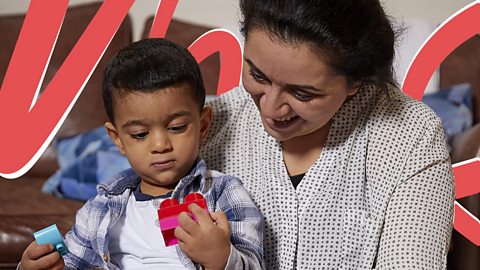You may have heard the words 'tummy time' from either your health visitor, midwife or other parents. But what is tummy time?
Tummy time is giving your baby a small amount of time lying on their tummy while they are awake, so that they can get used to being in this position. It lets them explore the different ways they can move their head, limbs and neck.
It's dangerous to put babies down to sleep on their tummy however, so make sure they're wide awake for tummy time.

The benefits of tummy time
The NHS recommends tummy time as a way to build muscles that your baby will eventually need for sitting and crawling.
By stretching and moving in the tummy-down position, your baby will strengthen their back, neck and shoulder muscles. They will also improve their general coordination as they get used to being in a different position.
This type of development - the ability to make big movements of the whole body - is often called gross motor skills.
When to start tummy time
You can start trying tummy time from birth. But to begin with, itÔÇÖs best to try it with your baby lying on your chest, rather than on the floor, so that you can keep control of what theyÔÇÖre doing.
By having your baby on your chest, youÔÇÖre able to give them a listen to the familiar sound of a heartbeat, which can help keep them relaxed and calm.
It's important to make sure that your baby does not get too hot so donÔÇÖt use blankets over you both.
And make sure that you are wide awake. It's easy to feel sleepy while enjoying a lovely face to face cuddle, but falling asleep with your baby, especially on a sofa or armchair, can be dangerous.
When theyÔÇÖre ready, try moving them to the floor.
From around 3 months of age, if you find that your baby has difficulty lifting their head, you can roll up a towel and pop it under their armpits.
How long should I do tummy time for?
When babies are first placed on their tummies, they often really donÔÇÖt like it.
And thatÔÇÖs ok ÔÇô to begin with you should maybe only try a few minutes per day. As they get more and more used to lying in a new position you can increase the length of your babyÔÇÖs daily tummy time session.
My baby is not enjoying tummy time - should I worry?
Not at all! This is very normal, particularly when you first start placing babies on their stomach. The sensation of using lots of muscles for the first time is a weird one!
However, itÔÇÖs worth sticking with it and gradually building up the amount of time you spend. You should aim for about 20 minutes per day by the time your baby gets to 6 months.
And there are all sorts of things you can do during tummy time that help to keep baby occupied.

How to do tummy time
Tummy time is really beneficial for your baby but you may be wondering what you can do during tummy time that helps.
NHS speech and language therapist, Francesca Ellis gave us some ideas of things to try during tummy time:
Newborn tummy time
While your baby is lying on your chest, try some soothing, quiet singing.
Even better, make it interactive by using your touch.
Rhymes/songs you could try include:
- Round and Round the Garden, with your fingers ÔÇśwalkingÔÇÖ on the babyÔÇÖs back
- Heads, Shoulders, Knees and Toes, touching babyÔÇÖs body parts in time to the song
- Incy, Wincy Spider, walking your fingers up and down babyÔÇÖs spine
First times on floor
When they first spend time down on the floor, your baby might struggle. However, voices and faces are massively motivating for babies, so get down to their level.
Lie in front of them and smile. YouÔÇÖll often find that they work harder to look at you, helping to strengthen those neck muscles.
If your baby is able to hold up their head in a more controlled way, try playing peek a boo.
Try introducing different tones of voice, facial expressions and body language too.
Reaching and crawling
Get baby comfy on the floor and place a few familiar items just out of reach, for example, their teddy, a spoon and a noisy toy.
When baby looks towards each item, pick it up and say its name, e.g. ÔÇśa spoon, itÔÇÖs your spoonÔÇÖ. Put lots of emphasis on the key word, ÔÇśspoonÔÇÖ. Then give that item to the baby to explore.
As baby starts to reach out and crawl, you can comment on their behaviour, ÔÇśoh you want you teddy? YouÔÇÖve got teddy! Well done!ÔÇÖ.
Remember - tummy time is not a test for you or your baby. Keep trying different things and hopefully you will both soon enjoy it!
Article produced with help from Jane Scattergood, Maternity Advisor and Chief Nurse, Maternity and Early Years Directorate, Public Health England.






